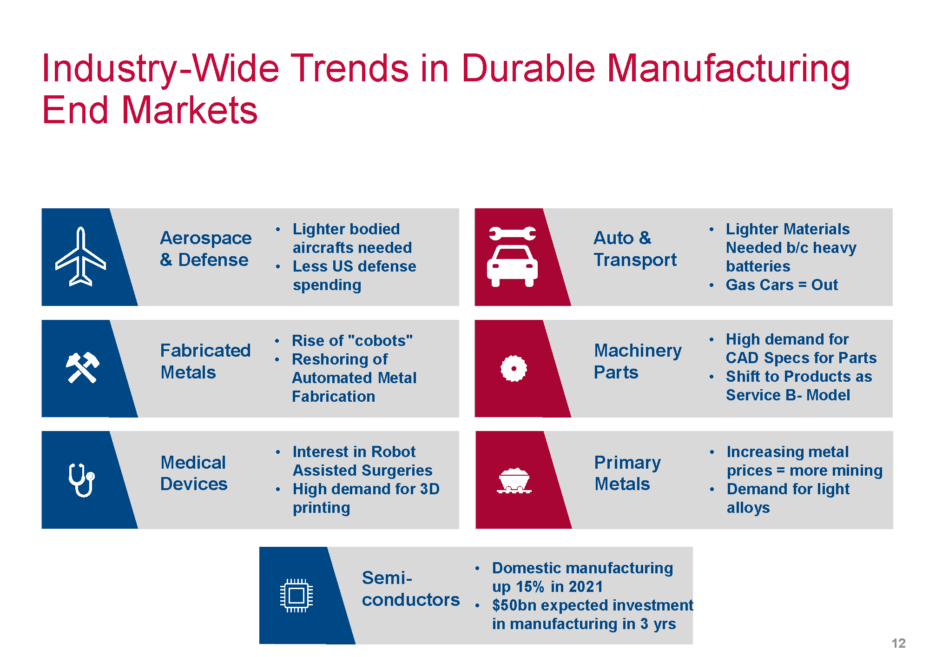Each semester, the Mack Institute’s Collaborative Innovation Program (CIP) brings Wharton and Penn students into some of the world’s top companies to solve organizational challenges. This past semester (Fall 2021), students consulted on a diverse lineup of live business challenges in industries ranging from metalworking to green banking.
The projects offer a window into the biggest trends, opportunities, and potential pitfalls in business strategy and innovation management. Below, we’ve rounded up some of the most interesting insights and key takeaways from our student consultants’ projects. Centered around some of the Mack Institute’s primary research areas, we’ve selected projects that relate to the following themes:
- Embracing New and Emerging Technologies
- Environment, Sustainability, and Governance
- New Players and Expanding Ecosystems
Part of a three part series
Theme 1: Embracing New and Emerging Technologies
Case Study A: Consumer Research and Product/Service Strategy for Smart Home Technology
Anticipating and implementing relevant new technologies is a persistent theme in innovation management. One of the Fall ‘21 groups worked with a leader in the home service trades industry (HVAC, electric and plumbing) to help understand and enter the burgeoning smart home technology market. Part of their research included an analysis of target markets for smart home devices based on home ownership status, income, and willingness to adopt technology.
Excerpt from Report:
The smart home technology market has expanded rapidly in the last few years and is expected to grow 13% CAGR over the next five years to $50 million. There are many opportunities in this market. We identified three priority segments of potential customers. Specifically, these are “Power Users” and “Trusting Users” who represent current buyers and “Smart-Home Beginners” for longer term opportunities. Together, the three segments account for 80 percent of the total market. In terms of demographics, Power Users and Trusting Users tend to live in urban or suburban areas, enjoy higher levels of income, have started families, and tend to work from home – benefitting from the conveniences of smart devices. Moreover, these segments have indicated plans to move or renovate their homes within the next 12 months, providing an opportunity to sell and install smart devices. In contrast, Smart-Home Beginners tend to be younger and have lower discretionary income, but are technology-savvy and are likely adopters of smart home devices as they become homeowners.
Case Study B: Identifying Market Trends and Aligning a Distributor’s Value Proposition for Growth
Another Fall 21 CIP project worked with a leading North American distributor of industrial metalworking supplies. The team analyzed the firm’s ecommerce strategy and provided an analysis of how the most successful ecommerce tactics from major players like Amazon could be incorporated into a highly specialized B2B environment.
Excerpt from report:
Company B operates in an intensely competitive environment, where customers have many options to choose from, and loyalty is hard to earn. Outperforming competitors requires that the company builds an advantage that is sustainable and offers greater value to the customers. To identify such opportunities, we looked to companies such as Amazon, Disney, and Nike, which have been tremendously successful in building a loyal customer base, for insights relevant to Company B. These companies have devised intelligent and creative ways to insert themselves into their customers’ lives, leveraging physical and virtual tools. Amazon’s Dash, Nike’s Chip, and Disney’s magic band are all examples of such products. Additionally, each one has designed their e-commerce ecosystem to promote retention and loyalty by building an interconnected set of activities/channels and placing the customer at the center of the ecosystem.

We believe that a systematic investment in Connected strategy would offer Company B a distinct advantage over its competitors. In a connected world, Company B would strategically deploy its services and applications to continuously learn and respond to the needs of its customers, collect and mine valuable data, offer smart product recommendations, build loyalty, and increase customer’s WTP. To get there Company B should prioritize investment in these high impact differentiators:
-
- In-house Data Science and Analytics capabilities: Building machine learning and AI solutions to offer enhanced shopping experience, predictive analytics, and opportunity assessment
- Experimentation culture: Data-driven decision making, A/B testing capabilities, etc.
- Omnichannel E-commerce
We’ve also identified some short-term investment opportunities that will enhance customer’s shopping experience and increase Company B’s revenue. This includes areas such as Search Engine Optimization (SEO), home page optimization, price-matching, and ease of navigation.
To learn more about the Mack Institute’s Collaborative Innovation Program and read interviews with alums from the program, click here.



